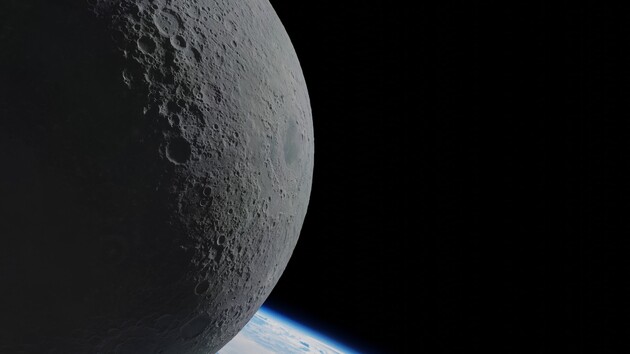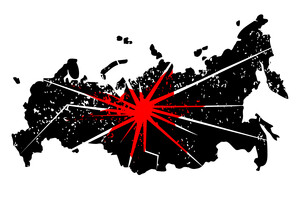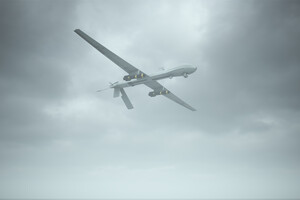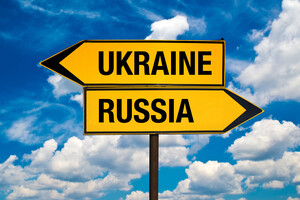The Space Fiasco of the Kremlin

On August 11, the Luna-25 lunar rover was launched from the Vostochny Сosmodrome in the Amur region of the Russian Federation using a Soyuz rocket. It was the first lunar mission in the history of modern Russia after the collapse of the USSR. The Kremlin planned to demonstrate to the whole world its scientific and technical potential and the validity of its claims to the status of an important geopolitical player. At first, the flight took place without any incident. But during the approach to the satellite of the Earth, problems began. On August 20, the interplanetary automatic station Luna-25 crashed on the surface of the moon, recording another fiasco of Russian space ambitions.
The last Soviet mission Luna-24 visited the moon back in 1976. The crash of Luna-25 is not just another failure in space research. This is also a certain personal defeat of Vladimir Putin. The Russian dictator has repeatedly announced ambitious plans for space. On July 19, 2023, a month before the collapse of the mission, Putin said: “We have big plans for both near and far space. There is something to work on and something to do.” Following the Russian unmanned missions to the Earth’s satellite, pilot space programs were to be launched. And then missions into deep space and Mars research were planned. However, ambitions and dreams are one thing, and the ability to make these plans a reality is quite another.
For Putin, the success of the Luna-25 mission was to become an effective means of propaganda for domestic and foreign audiences. He said that modern Russia is not only capable of waging wars of aggression, carrying out brutal missile attacks against Ukraine, killing civilians and destroying infrastructure. And maybe – even under the conditions of Western sanctions – independently launch rockets into space. To contribute to science. And claim a piece of the big cosmic pie in the future development of the Moon’s resources. If Luna-25 successfully landed on the surface of the Earth's satellite, the Kremlin could pretend that Russia is also participating in the second lunar race. In fact, it lags far behind the USA and even China and risks letting India go ahead.
The geopolitical picture of the world at the beginning of the XXI century has undergone serious changes. And these changes are partially reflected in the space achievements of the states. Russian authorities can think a lot about flights into deep space and tell the Russians another batch of fables about “how they will walk on the surface of the moon, build a station there, and then fly to Mars.” However, the main achievements of the Russian Federation are relatively regular launches to the International Space Station, which revolves around the Earth, and the launching of satellites of various purposes into the orbit of our planet. Meanwhile, all the few attempts of Roscosmos to independently implement remote space missions to other objects of the Solar System were unsuccessful.
In November 1996, five hours after launch, the Russian interplanetary space station Mars-1996 crashed. The flight to Mars was supposed to demonstrate the symbolic continuity of the Russian Federation and the USSR in the conquest of outer space. The apparatus was equipped with powerful scientific instruments at that time, including those manufactured in other countries. It was the heaviest of all interplanetary stations ever launched into space. But it did not reach Mars as it burned up in the Earth’s atmosphere.
Russian pride was hurt. To get out of the situation, Roscosmos proposed a new project. This time to the satellite of Mars, Phobos. The Phobos-Grunt project was approved back in 1998. Its practical implementation began in 2005. However, the mission would constantly be postponed. There was also a lack of money. In November 2011, the Russians finally tried to launch their new interplanetary probe to Mars. The aim of the interplanetary station was to land on the red planet's tiny satellite, Phobos. After taking soil samples and a number of astronomical studies, the device was supposed to return to Earth. The Russian authorities had great hopes for this mission. The success of the flight to Mars was supposed to confirm the status of the Russian Federation as a great space power. But the Phobos-Grunt did not live up to expectations. After launch, the space station could not leave the Earth’s gravitational field and instead of traveling into the depths of outer space began to slowly fall to its home planet. On January 15, 2012, Phobos-Grunt burned up in the Earth’s atmosphere. Moscow’s Marsian plans fell into fragments in the Pacific and Atlantic oceans and on South America. Later, head of Roscosmos at the time, Vladimir Popovkin, stated that the mission to Phobos could be repeated in 2022-2025. Still, judging by the current state of affairs, Russia is not on Mars now. It cannot even reach the moon.
While Russia was enjoying the achievements of the USSR, cosmonautics did not stand still. In 2007, the China lunar program began. Within its limits, in December 2013, the People’s Republic of China was able to land the Chanye-3 apparatus on the surface of the Earth’s satellite. In January 2019, the Chinese interplanetary station Chanye-4 successfully landed on the side of the Moon for the first time in history. And in December 2020, Chanye-6 delivered lunar soil samples to Earth. Beijing has ambitious plans that are not limited to unmanned expeditions.
Other players joined the space race. These days, the Indian space probe Chandrayaan-3 is preparing to make a soft landing on the moon. If it is successful, it will be an additional blow to Russia’s reputation. It is interesting that the landing of the Indian apparatus is planned in the area of the South Pole – where the Russian Luna-25 would have landed if it had not crashed.
But Russia is lagging behind not only in launching unmanned missions to the moon and other bodies of the solar system. The aggressor country is lagging behind in the development of a modern manned spaceship capable of delivering people to the Earth’s satellite and beyond, all the way to Mars.
In 2009, the Russian rocket and space corporation Energia won a competition for the creation of a new generation manned spacecraft project. Its main purpose was to be flights to the moon with astronauts on board. The ship was named Eagle. Only in the period from 2016 to 2025 it was planned to allocate more than 57 billion Russian rubles for its financing. The implementation of the project took place slowly and with scandals. The first launch of the new Russian spacecraft was constantly postponed. More recently, a test launch without pilots was planned for 2023. But now they decided to postpone it to 2028. The exact reason for such a significant time shift is unknown. However, obviously, it is connected with Russia’s aggression against Ukraine and the sanctions regime, which made it difficult for the Russian Federation to access modern advanced technologies. Under these conditions, there are serious doubts that in the next 10 years Moscow will be able to send its astronauts to the moon. Meanwhile, the Kremlin’s competitors can boast of much greater success.
In 2006, NASA signed a contract with Lockheed Martin to build a new manned interplanetary spacecraft, Orion. The process was not perfect. But in December 2014, the ship successfully launched from the spaceport at Cape Canaveral. Meanwhile, the implementation of the space program to return to the moon, which was named Artemis, began in the USA. In November-December 2022, the Orion spacecraft, as part of the Artemis-1 mission, made a successful unmanned flyby around the Moon, and returned to Earth. The next similar mission of Artemis-2 should take place already with pilots on board. And the cosmonauts who will participate in the Artemis-3 mission must land on the surface of the satellite. This will happen approximately in 2025. In the future plans of the Americans is the construction of the lunar orbital station Gateway, and then – a dash to Mars.
China actively joined the race for the moon. In 2020, the prototype of a Chinese spacecraft designed to fly to the Earth's satellite made its first unmanned test flight. It is expected that in a few years, Chinese astronauts will be able to test it in practice. And by 2030, China will be able to carry out a manned mission with a landing on the moon. The problem that prevents Beijing from moving faster in the race with the United States is the lack of a powerful launch vehicle under development.
Elon Musk’s company SpaceX also took an active part in the space race. Regular Dragon launches to the ISS have already become commonplace. But Musk dared to do more. Tests of the interplanetary spacecraft Starship and the Super Heavy launch vehicle are currently actively underway. Its purpose is to fly to the Moon and Mars. In April of this year, the first orbital test of the joint operation of a spacecraft and a launch vehicle took place. It did not end very well. The ship rose to a height of 39 km, after which it was blown up due to engine failure. But the work is actively ongoing. It is very likely that Starship will fly into space within the next few years. What cannot be said about the Russian Eagle.
The latest developments in space research show that Russia is gradually becoming a secondary space power. A high level of corruption, management inefficiency and scientific and technological lag behind the world’s leading countries are inexorably pushing Russia to the sidelines of the space race. Its place is occupied by more successful and powerful players. The race for leadership in space exploration is a matter of geopolitical prestige and influence. Russia is surely losing this competition now.
Read this article in Ukrainian and russian.
Please select it with the mouse and press Ctrl+Enter or Submit a bug















 Login with Google
Login with Google